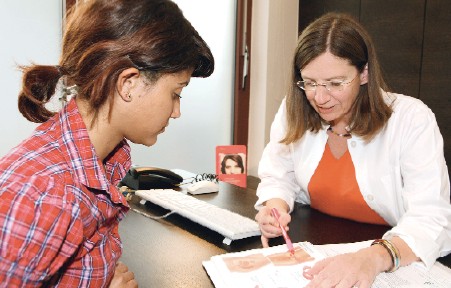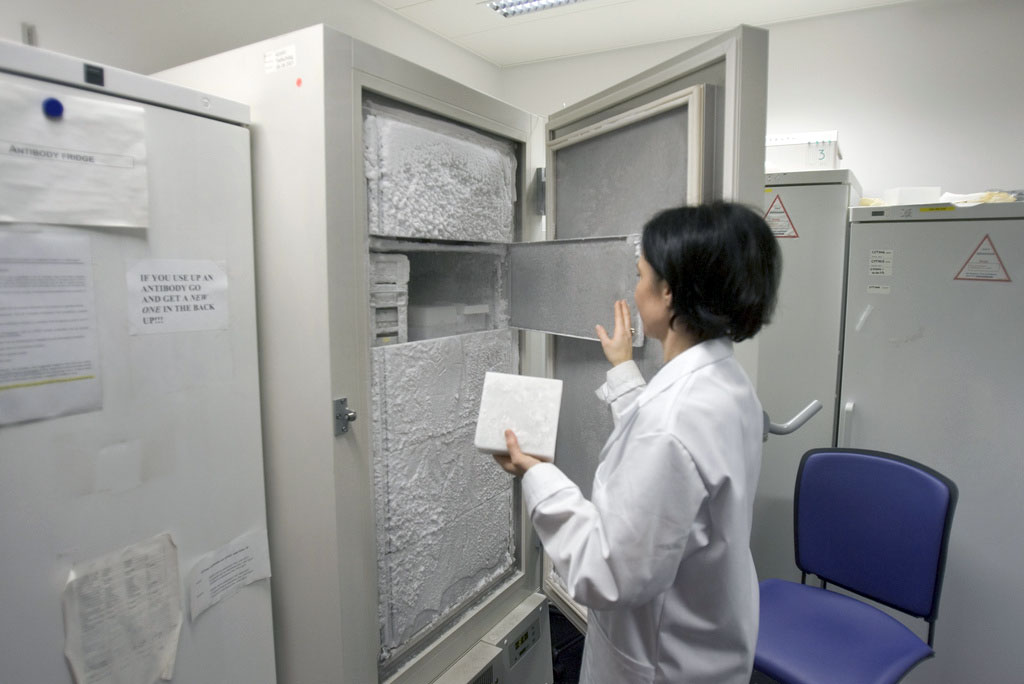Health bosses move to boost cancer jabs

Health officials are rethinking how to promote jabs against cervical cancer after the slow take up of a national vaccination programme among young women.
Switzerland rolled out a programme in 2008 to vaccinate girls and young women aged 11 to 19 against the human papilloma virus, or HPV, which causes around 2,000 Swiss women to develop the early stages of cervical cancer every year.
But at the start of 2010, just 36 per cent of the age group had been vaccinated. This national average hides two different pictures for French- and German-speaking parts of Switzerland.
In French cantons the rate of vaccinations was 57 per cent, as jabs are typically done by school doctors, a method which generally has produced the best vaccination rates in the past. In German cantons the rate was only 29 per cent – this mainly because vaccinations are done by family doctors, which takes more time in the long run.
A similar divide between French and German parts was experienced in vaccination campaigns against Hepatitis B.
Faced with this parallel process, a working committee has now been created with representatives of the Swiss Conference of Cantonal Ministers of Public Health and the Federal Health Office. They will be looking at best practice among the cantons and how to share those experiences in order to have a higher vaccination rate.
Financing issues
In launching the HPV vaccination programme in 2008, heath authorities had set a goal of 80 per cent of 11-14 year olds and 50 per cent of 15-19 year olds getting the jab by 2012. But these targets will only be met in some cantons.
Further complicating attempts to coordinate the issue nationally is a complex system of financing the vaccine. Each canton buys the vaccine, given out free to the public, and pays the doctors issuing it, before being reimbursed by insurers.
The reason for this choice is simple: if the vaccine is directly reimbursed by insurers, it costs SFr237. “Whereas today, in negotiating directly with the manufacturers, it is SFr66.60 a dose,” explained Hanspeter Zimmerman of the Federal Health Office.
Michael Jordi of the Swiss Conference of Cantonal Ministers of Public Health said it was fair to say that the system of reimbursements was “quite complicated”, adding: “It’s not the cantons that have chosen it but the law [on insurance and prescriptions] that dictates it.”
He said different school vaccination systems among cantons was an issue. “It is harder to reach the young girls if you have a medical school service covering a wide area. If they have to go to the doctors [instead of their schools], it’s clearly more complicated.”
Extra protection
However Jordi is optimistic that the kinks in the HPV programme will be ironed out over time.
To tackle the issue, the new cross-cantonal working committee has two goals, to look how to improve HPV vaccination issues in the short and long term and how to integrate this HPV vaccine into normal school vaccination programmes.
Cervical cancer is currently the 14th most common cancer among women in Switzerland and among women under 50 it rises to fourth place. Around 75 per cent of these cancers are caused by the HPV virus.
In introducing the programme, health officials said vaccinations not only offered protection to a maximum number of girls but also gave them equal access to the vaccine.
Nicole Bulliard, of the Swiss Cancer League, says that while they support the programme in principle, vaccines do not offer complete protection against cervical cancer.
“The Swiss Cancer League also recommends wearing condoms and regular gynaecological checks after becoming sexually active. It can’t be forgotten that it doesn’t protect 100 per cent against HPV.”
More than 100 types of the human papilloma virus, or HPV, exist. Each has been given a number.
HPV is transmitted sexually or more rarely, through direct contact on the skin. An estimated 70 to 80 per cent of the population in Switzerland will become infected at some time in their lives.
One woman in five infected with certain types of HPV will develop a precancerous
condition or cancer.
Vaccination provides protection against most of the cancer-causing types of HPV and is recommended for girls aged 11 years and older.
The vaccine is given by injection into the arm, with a course of three doses required to ensure effective protection.
A deadlier variety causes 2,000 women in Switzerland each year to develop the preliminary stages of cervical cancer. About 160 of them get the disease and 50 die. The cancer can remain undetected for years.
Cervical cancer develops from cells lining the neck of the womb (cervix). Usually, these cells first develop abnormal changes, which then become cancerous.
Most cases of the cancer are caused by the human papilloma virus, or HPV. A smaller number of cases are caused by other sexually transmitted diseases such as Chlamydia and herpes.
Other factors are insufficient hygiene, number of sexual partners and tobacco.

In compliance with the JTI standards
More: SWI swissinfo.ch certified by the Journalism Trust Initiative












You can find an overview of ongoing debates with our journalists here . Please join us!
If you want to start a conversation about a topic raised in this article or want to report factual errors, email us at english@swissinfo.ch.